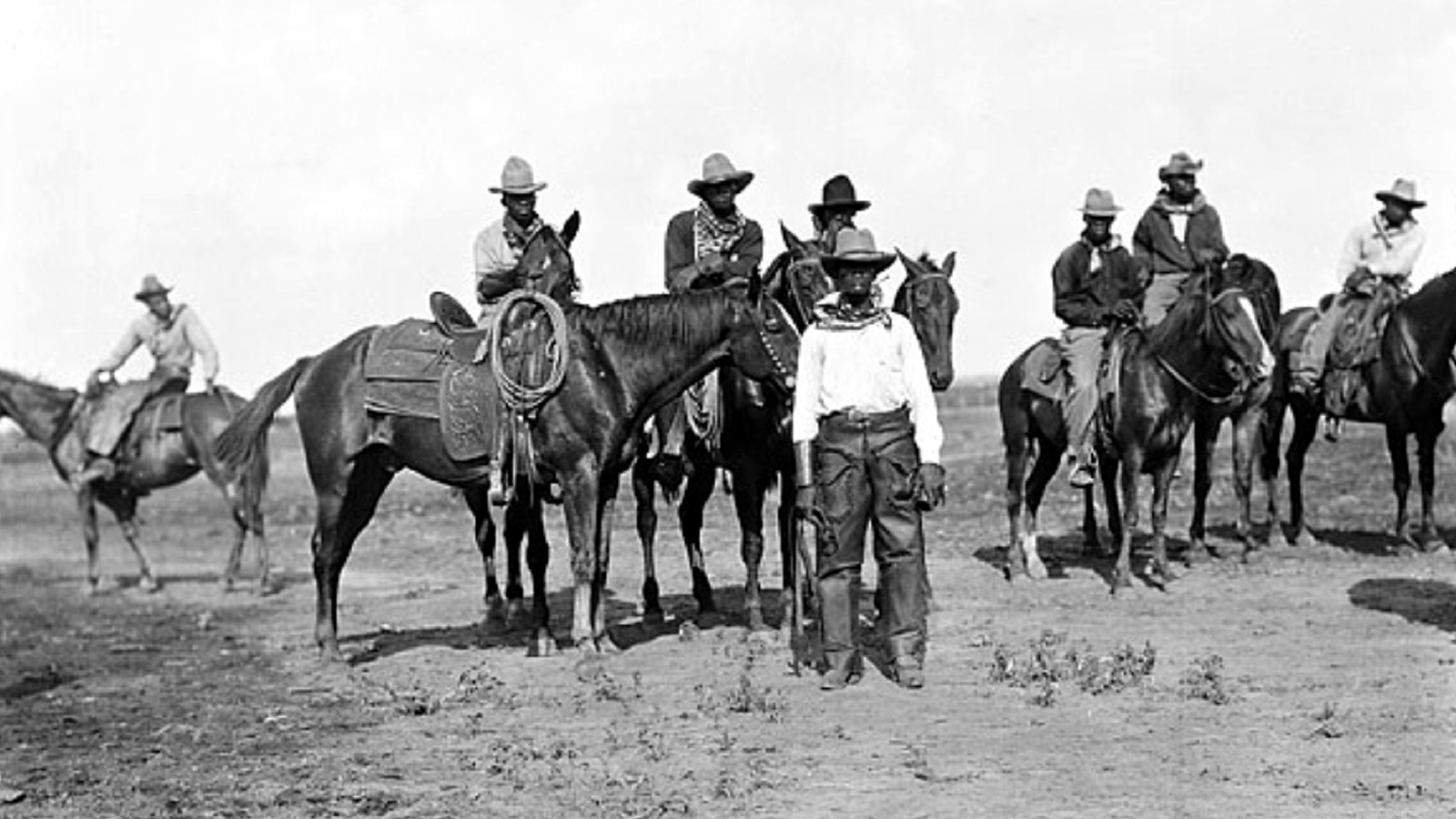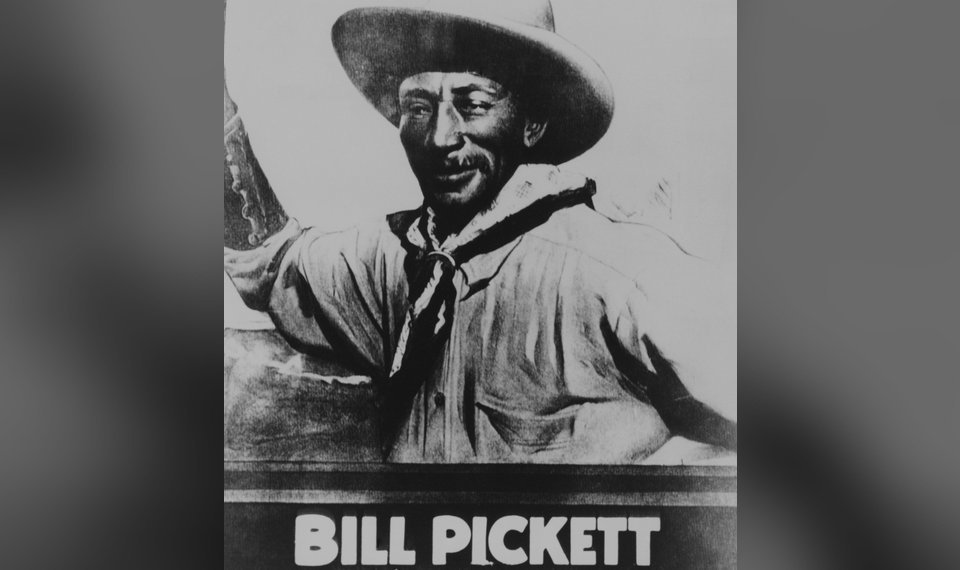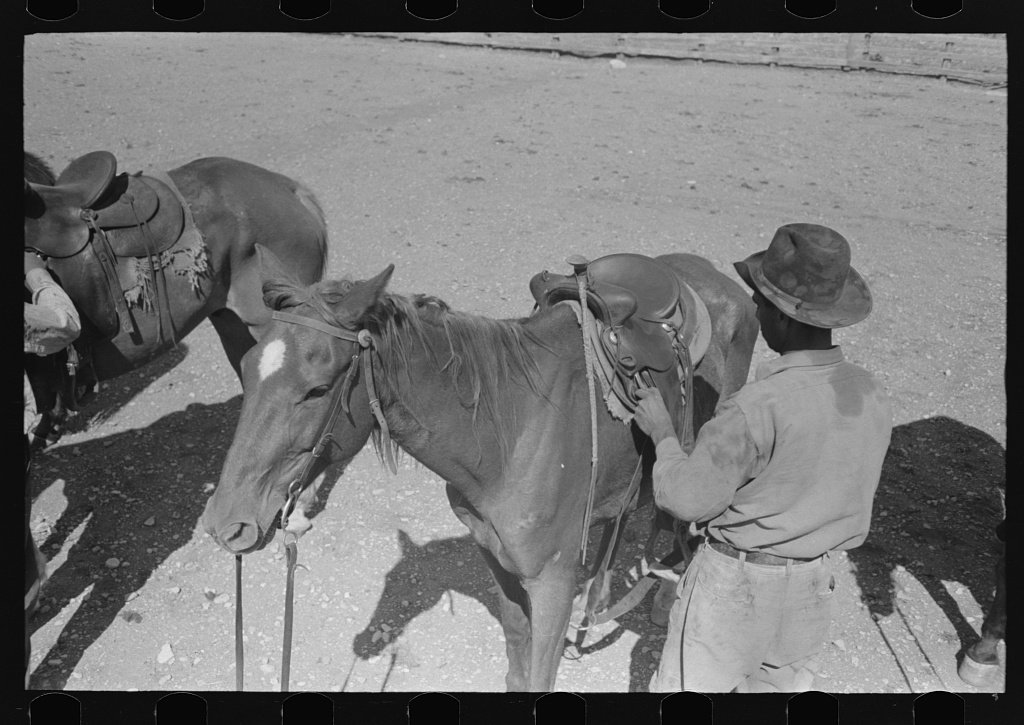
The cowboy is viewed as an American icon: rugged rider of the range; champion of the good. Yet our understanding of cowboys has, for the most part, been informed by movies and television shows. Cowboy culture and history are a product of diverse men and women of all backgrounds; therefore, it is important for teachers to expose students to the varied cultures that influenced the American West.
The History of the Black Cowboy
American history textbooks frequently omit the contributions of black cowboys, yet about one in every four cowboys was African American. Silver Walker, a former black cowboy, was one of the leading horse racers in 1870. In fact, the winning jockey of the first Kentucky Derby was black. Until the early 1900s, there were many black jockey winners, such as Ike Murphy, who won the Derby three times. Historically, the word cowboy may have first been used as a description of a black slave’s role with cattle.
Many blacks went west in the 1800s to escape oppression. As white ranchers went off to fight the war, black cowboys found jobs available in western states. Although they were seeking economic freedom, blacks still faced social discrimination. Rarely did a black cowboy advance to the level of trail boss or foreman, and in saloons, blacks were forced to stay at the end of the bar. Hollywood did step up to the plate by making several all-black cowboy movies. In the 1930s, western musicals created the hero known as the Bronze Buckaroo with black cowboy singer Herbert Jeffries. Jeffries sang his own western compositions in the movies.

Foster Inquiry in the Classroom
Teaching about the American West offers an opportunity for students to dive deep into the various groups that were prevalent during the expansion period. Start with an essential question to spark inquiry. Ask students, “What is a cowboy? Where did you get your ideas of what a cowboy is? What cowboy movies have you seen? Have you ever seen black cowboys in movies or on TV?”
Ask students to write down their ideas of what a cowboy’s life was like. You can inquire, “Why do you think the stories of African American cowboys have been written out of history?”
Have students choose a black cowboy to research further and see if this helps to answer the essential questions. Here are some famous examples:
- Nat “Deadwood Dick” Love, former slave considered expert roper, rider, and shooter; wrote the only known autobiography of an African American cowhand; tales of his life were made into a comic book series
- Bose Ikard, former slave who became one of the most famous Black frontiersmen and trail drivers in Texas
- Bill Pickett, first African American inducted into the National Cowboy Hall of Fame; credited with inventing “bulldogging”
- Willie Kennard, served as Marshal of Yankee Hill, a gold mining village in Colorado
- Bass Reeves, deputy U.S. Marshall famous for tracking down, capturing and arresting over 3000 criminals; master of disguise who left a silver dollar as his calling card; rode a white horse, which caused some historians to suspect he was the inspiration for the Lone Ranger character
- Isom Dart, gained a reputation as a late 19th Century Wyoming Territory outlaw; worked as a rodeo clown and stunt rider
- Fred Whitfield, first black rider to win a world title in rodeo’s prestigious all-around division
- Charlie Willis, the singing cowboy who wrote many songs; former slave; good at breaking wild horses
 Photo: Library of Congress
Photo: Library of Congress
Project-based Learning
There are many teaching pathways to take when introducing black cowboys and other groups from the western expansion period in American history. Any of the suggestions below can be used as a journal activity or student reflection, a project-based learning activity where students work individually or in groups, or a research paper.
- Ask students to research jobs available in the Old West, then choose one job they would like to do and describe it on an index card. Have students choose western names for themselves, introduce themselves to the class as this person, and explain what work they do in the Old West. Ask students, “How would your job be affected as a white or black cowboy?”
- Research some of the music and poetry that was a source of entertainment in the Old West. Play selections from Aaron Copland’s musical composition Rodeo, especially “Hoe-Down.” Ask students to describe how the music creates pictures in their minds that relate to cowboys. Other cowboy songs to sing include “Streets of Laredo,” “Red River Valley,” and “Home on the Range.” Introduce Charley Willis (the singing cowboy), who wrote “Goodbye Old Paint.”
- During the 1860s to 1880s, cattle were driven on long drives across unfenced prairie to towns such as Abilene, Ellsworth, Dodge City, and Wichita. These towns sprung up along railroad lines to attract the cattle business. Ask students to research cow towns and cattle trails. Have students map some of the famous trails, such as the Old Chisholm Trail. Ask students, “What dangers did the cowboys face on the trails? How did the geography of the land influence the way the trail was developed? What other geographic factors influenced the movement of cattle?”
- Introduce the Buffalo Soldiers to students—black soldiers in the Ninth and Tenth US Calvary Regiments. These soldiers helped build roads and protect mail and served as some of the first national park rangers.
- Bring in an expert in the field of rodeo to talk to students, in particular the bulldogging event. Introduce Bill Pickett and the story of how he invented bulldogging.
Information on black cowboys is documented in historical records and children’s literature. Some books to use are
- Buffalo Soldiers: Heroes of the American West;
- Black Gun, Silver Star: The Life and Legend of Frontier Marshal Bass Reeves;
- Beyond the Goodnight Trail;
- Black Cowboys in the American West: On the Range, on the Stage, behind the Badge;
- Black Cowboy, Wild Horses: A True Story;
- The Life and Adventures of Nat Love (from the series Blacks in the American West);
- Bill Pickett, Rodeo-Ridin’ Cowboy; and
- Black Cowboys of the Old West: True, Sensational, and Little-Known Stories from History.
Teachers are responsible for creating a curriculum that balances the contributions of various ethnic groups throughout our history. For the Wild West, students can participate in a variety of activities that explore the heritage of the many peoples who contributed to the diverse cowboy culture, including black cowboys.
This blog can be used in the classroom to support teaching African American Studies, Ethnic Studies, or Black History Month.
Seeking more professional learning resources?
See what our professional learning department can do for your teaching
Kay Gandy is a retired professor of seventeen years and a retired elementary teacher of twenty-seven years. Her goal is to work with teachers in countries around the world and watch movies in foreign theaters. Her books Mapping Is Elementary, My Dear and 50 Ways to Teach Social Studies (June 2021) provide practical lesson ideas for elementary teachers.
Great content about facts that are not covered in our texts.